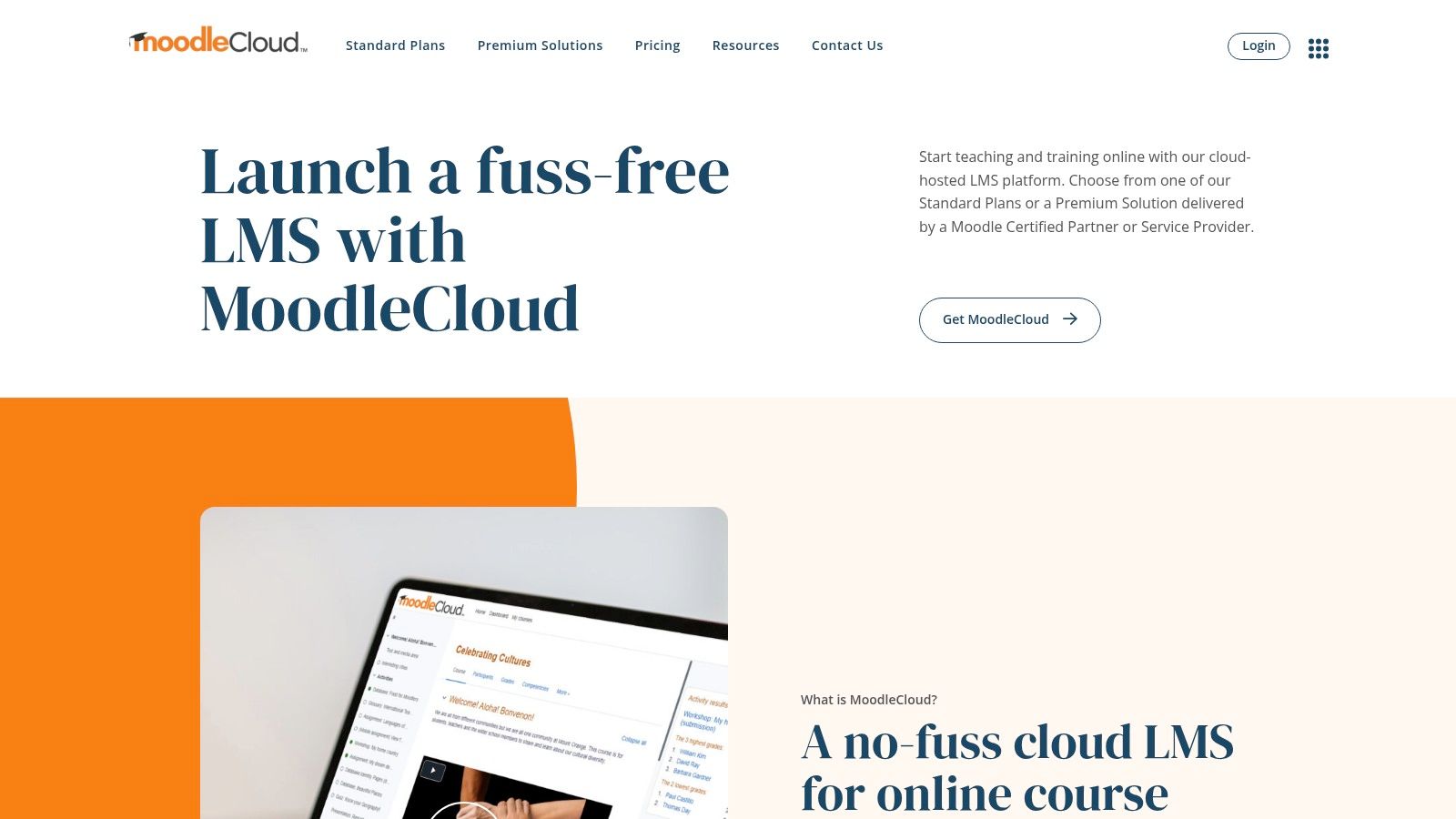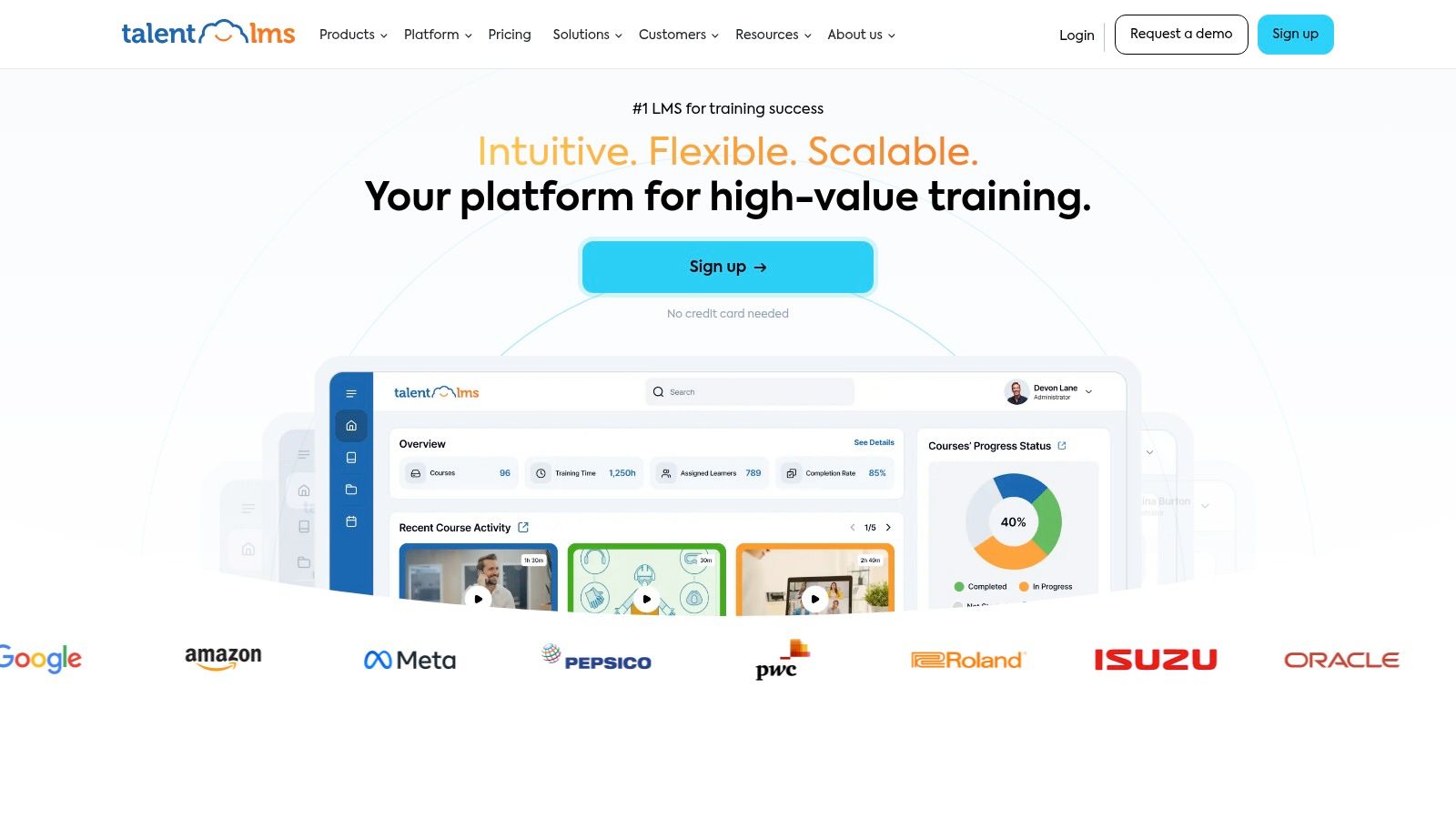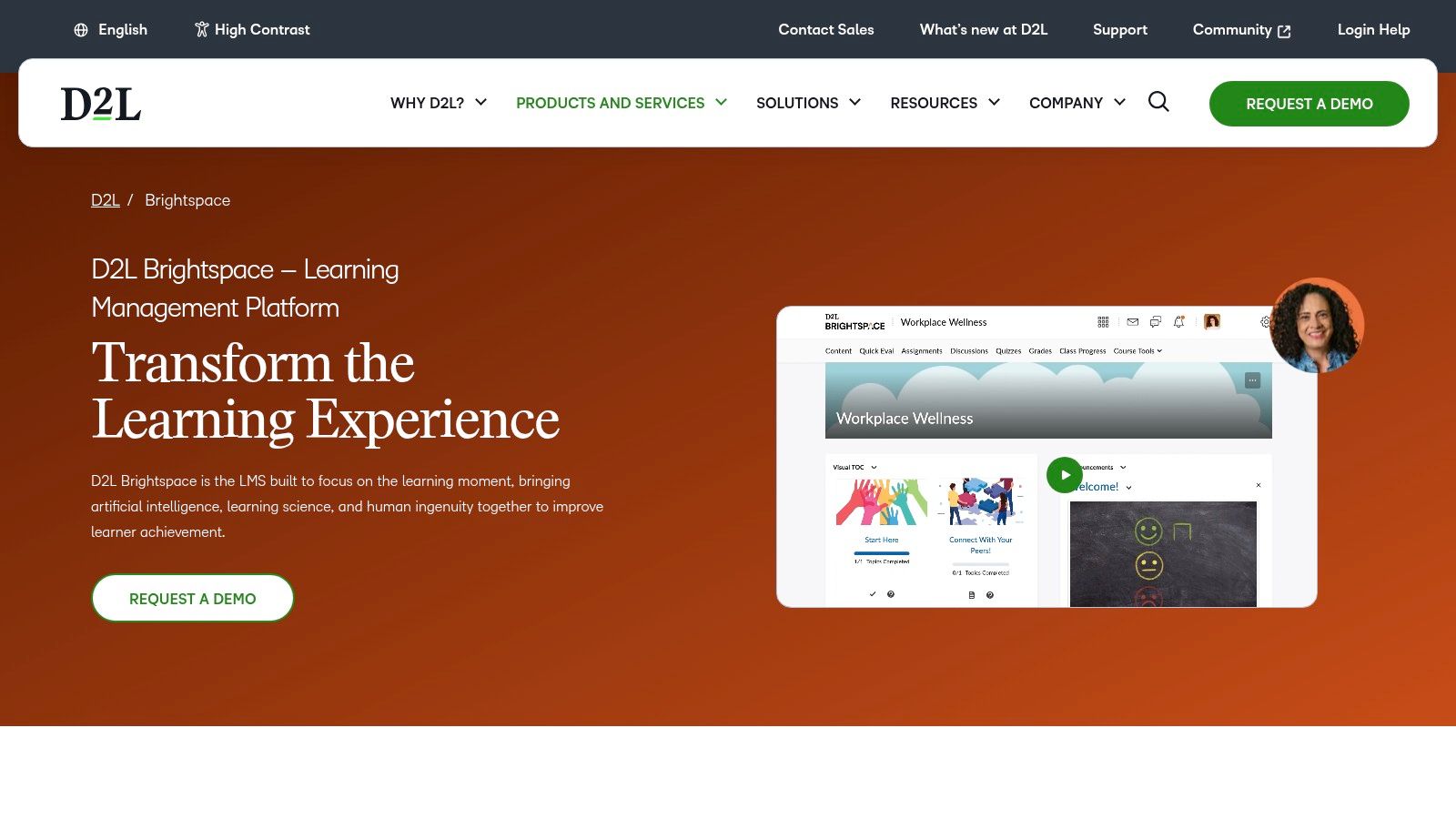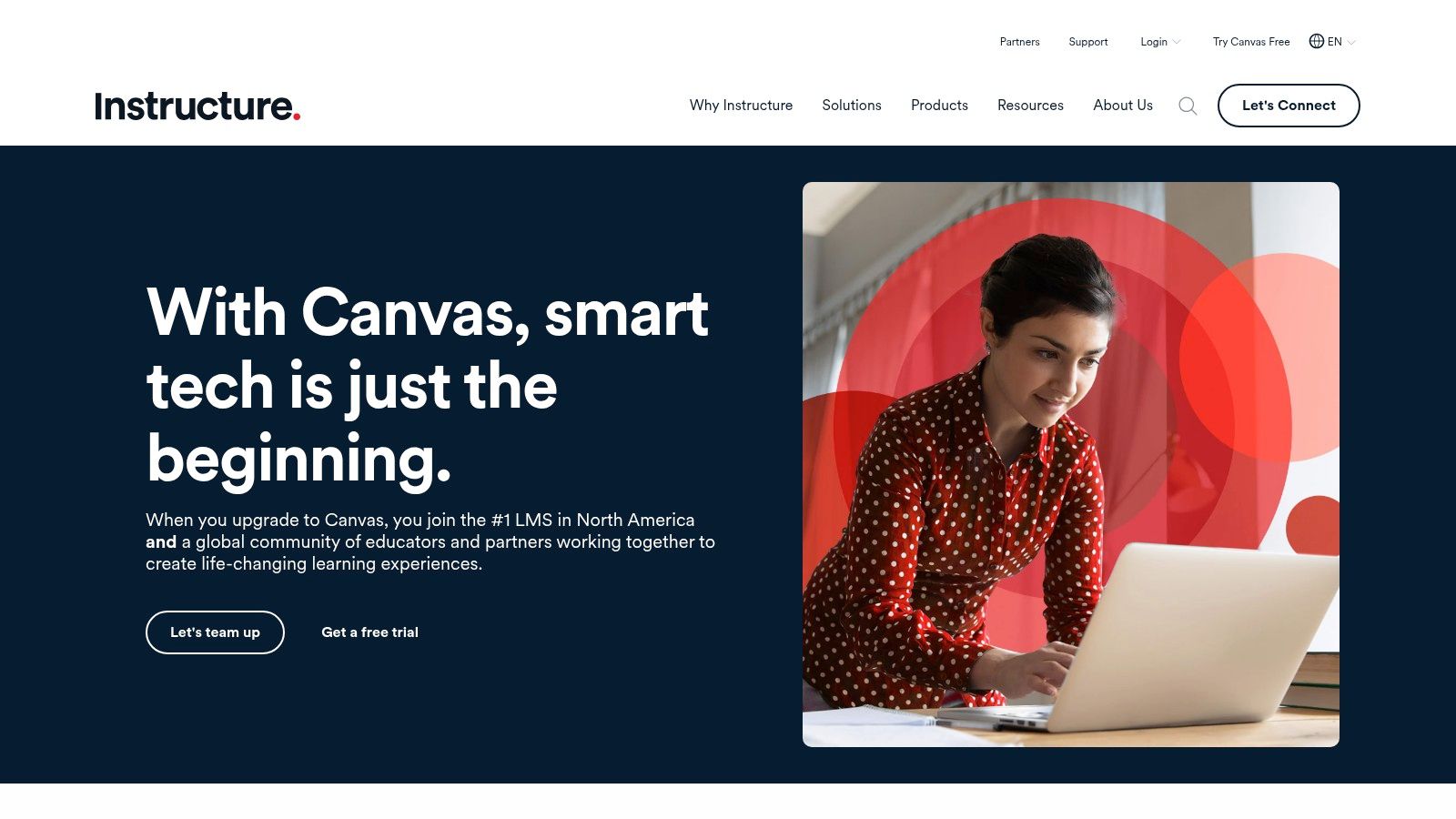
Just stepping into instructional design? The world of Learning Management Systems (LMS) can feel like a maze of acronyms and options. You're hearing terms like LXP, SaaS, and seeing authoring tools like the Articulate Suite, but figuring out how they all connect is a huge first step. A solid LMS is the backbone of any digital learning strategy, serving as the central hub for your courses, learners, and analytics. It's the digital campus where your eLearning content, whether it's a microlearning video or a full-blown simulation built in Adobe Captivate, actually lives.
This guide is built to cut through that confusion. We’ll break down the different learning management system types, from open-source to cloud-based, and show you how each one fits into modern instructional design theory. We'll explore how trends like AI are being woven into these platforms and which systems work best for specific goals.
Forget the vague overviews. We're diving into real platforms, complete with screenshots and direct links, so you can see exactly how they function. Our goal is to give you the confidence to select the right platform for your projects, whether you're a teacher changing careers or a new learning experience designer. Let's find your perfect LMS.
For anyone just dipping their toes into the vast ocean of learning management system types, the name "Moodle" likely pops up early and often. MoodleCloud is the official, hassle-free way to harness the power of this legendary open-source platform without needing a degree in IT. It’s a Software as a Service (SaaS) solution, meaning Moodle hosts and manages everything for you, so you can focus purely on creating great learning experiences.
This makes it an incredible starting point for educators, small training teams, or instructional designers building their first major project. You get the robust, flexible framework Moodle is famous for but in a ready-to-launch package. Think of it as getting the keys to a powerful car without having to build the engine yourself.

MoodleCloud bridges the gap between the DIY, self-hosted open-source world and the plug-and-play simplicity of proprietary systems. It offers a structured, supported environment while still giving you the core Moodle experience of unlimited courses and activities.
Key Insight: MoodleCloud is the ideal gateway for learning professionals who want the flexibility of an open-source LMS but lack the technical resources or time for self-hosting. It’s open-source with training wheels.
MoodleCloud comes packed with features that are immediately useful for new and experienced L&D professionals alike:
Pricing is transparent and based on user numbers, starting with a free 45-day trial. The Starter plan is an affordable entry point for small-scale projects.
For a closer look, visit the official website: https://www.moodlecloud.com
If you're looking for one of the most popular, get-started-now learning management system types, TalentLMS is a name that consistently tops the list. As a cloud-native, Software as a Service (SaaS) platform, it's designed from the ground up for speed and usability. There's no complex setup or server maintenance; you can sign up and start building your first course in minutes.
This makes TalentLMS a powerhouse for small to mid-sized businesses (SMBs), corporate training departments, and freelance instructional designers who need to deliver results without a lengthy implementation phase. It’s built for the modern workforce, emphasizing an intuitive interface and features that scale as a company grows. Think of it as a comprehensive training toolkit that's ready right out of the box.

TalentLMS masterfully balances a feature-rich environment with an incredibly user-friendly admin experience. It's powerful enough for complex corporate compliance training but simple enough for a first-time course creator to master quickly. The platform also leans heavily into AI, offering tools that dramatically speed up content creation and management.
Key Insight: TalentLMS is the go-to for teams that prioritize "time to value." Its always-free plan and transparent pricing remove the typical barriers to entry, making it perfect for piloting a program before committing financially.
TalentLMS provides a robust set of tools that directly address the needs of modern learning and development professionals:
The platform's clear public pricing is a major advantage; you can see a breakdown of TalentLMS pricing before you even talk to a salesperson. It starts with a generous free plan for up to 5 users.
For a closer look, visit the official website: https://www.talentlms.com
When your training needs grow beyond a single team and into a full-blown enterprise ecosystem, you’re entering Docebo's territory. Docebo represents a major player in the world of learning management system types, specifically designed for large-scale employee, customer, and partner training. It’s an AI-powered platform that aims to automate and personalize learning for complex, multi-audience organizations.
Unlike systems built for a single classroom, Docebo is engineered to manage intricate hierarchies, different branding for various audiences, and sophisticated learning paths. It moves beyond simple course delivery to become a central hub for corporate knowledge, making it a go-to choice for companies looking to unify their entire learning and development strategy.
Docebo’s biggest differentiator is its powerful, native AI engine. While many platforms are adding AI features, Docebo has embedded it deeply into its core for years. This AI automates course suggestions, analyzes content for skills, and helps administrators manage the platform more efficiently, saving significant time for L&D teams. It's a system designed to scale with your business without requiring a proportional increase in administrative headcount.
Key Insight: Docebo is built for the complexity of the modern enterprise. It’s the right choice when you need to train multiple, distinct audiences (like employees, resellers, and customers) from a single, intelligent platform.
Docebo’s suite of tools is geared toward creating, managing, and measuring the impact of learning at scale:
Docebo does not publish its pricing. It’s a true enterprise solution that requires a custom quote based on active users and specific feature sets.
For a closer look, visit the official website: https://www.docebo.com
For those exploring learning management system types that excel in both academic and corporate settings, D2L Brightspace is a formidable contender. It's a robust, feature-rich platform that has built its reputation on strong assessment capabilities, accessibility, and a partnership-focused approach to implementation. It’s designed for organizations that need a powerful, structured learning environment capable of handling complex compliance and integration requirements.
If MoodleCloud is like getting the keys to a powerful car, Brightspace is like working with an engineering team to build a custom vehicle fleet. It’s a comprehensive solution for established K-12, higher education, or corporate training departments that need a system to integrate deeply into their existing technology ecosystem.

Brightspace shines in its ability to cater to formal, high-stakes learning environments. Where some platforms focus on informal knowledge sharing, Brightspace provides the tools needed for rigorous assessment, detailed tracking, and certification management, making it a go-to for accredited programs and regulated industries.
Key Insight: D2L Brightspace is engineered for organizations that view their LMS as a central pillar of their operational infrastructure, not just a content delivery tool. It’s ideal for those needing deep integration and vendor-supported change management.
For an instructional designer or training manager, Brightspace offers a toolset designed for structure and scale:
Pricing is available through a direct sales consultation, as it's tailored to the institution's or company's specific needs. This involves a more traditional, multi-stakeholder buying process.
For a closer look, visit the official website: https://www.d2l.com/brightspace
When your training needs go beyond just internal employees, you enter a more complex world of learning management system types. Absorb LMS is a powerful proprietary platform designed specifically for this reality, excelling at training not only your team but also your customers, partners, and external stakeholders. It’s a sophisticated, cloud-based solution that prioritizes a slick user experience and robust administrative control.
This makes Absorb LMS a top contender for growing businesses and enterprises that need a scalable system to manage diverse learning audiences. It's particularly strong for those who want to sell their courses, as it comes with powerful e-commerce functionality baked right in. Think of it as a central training hub that can serve every branch of your business ecosystem.

Absorb LMS shines brightest in its ability to cater to mixed audiences with ease, all while providing an exceptionally high level of customer support. For instructional designers or L&D teams who may not have a large IT department to back them up, having a dedicated onboarding specialist and 24/7 support is a massive advantage.
Key Insight: Absorb LMS is built for organizations that view training as a business function, not just a compliance task. Its blend of internal training, external partner education, and e-commerce capabilities makes it a versatile engine for revenue and growth.
Absorb LMS is packed with features designed to make corporate training more efficient and engaging, especially for those new to managing such a complex system:
Absorb LMS uses a tailored pricing model, which means you'll need to contact them for a custom quote based on your specific needs. This ensures you only pay for the features you require.
For a closer look, visit the official website: https://www.absorblms.com
If you've spent any time in higher education in the US, you’ve almost certainly encountered Instructure Canvas. It's a powerhouse among learning management system types, dominating the academic landscape with its robust, pedagogy-focused design. While born in the classroom, its capabilities have expanded, making it a serious contender for large-scale corporate training programs as well.
Canvas is known for its clean user interface and deep feature set, which prioritizes effective teaching and learning workflows. It’s less of a lightweight training tool and more of a comprehensive educational ecosystem, built to handle the complexities of large institutions. For new instructional designers, understanding Canvas is like learning the industry standard for academic e-learning.

Canvas excels by blending a user-friendly experience with powerful, academic-grade features and an unparalleled ecosystem. Its massive community of educators and developers means you’re never far from a guide, a third-party tool, or a peer-reviewed best practice for any learning challenge you might face.
Key Insight: Canvas is the gold standard for academic LMS platforms that has successfully crossed over into the corporate world. It's built for organizations that need a proven, scalable, and highly integrated learning environment.
The platform is packed with features designed to support structured learning paths and foster engagement. Its strong foundation in instructional design principles is evident throughout the user experience.
Instructure does not publish its pricing publicly; it's typically quoted based on the size and needs of the institution or company. This often involves a more formal procurement process.
For a closer look, visit the official website: https://www.instructure.com/canvas
When you’re first navigating the crowded market of learning management system types, it can feel overwhelming. G2 is not an LMS itself, but rather an essential compass for finding the right one. It's a massive software marketplace where real users leave verified reviews, allowing you to compare, shortlist, and discover systems for both academic and corporate needs.
Think of it as the ultimate reality check for your research. While vendor websites showcase a perfect world, G2 provides the unfiltered user sentiment you need to validate your choices. For anyone pivoting into instructional design, it’s a crash course in the current LMS landscape, helping you understand which platforms are genuinely making an impact.
G2 demystifies the software selection process by aggregating peer experiences. Instead of relying solely on marketing materials, you can see how a platform performs in the real world, what its true strengths are, and where it falls short. Its detailed filtering options let you zero in on systems that match your specific criteria, from company size to feature requirements.
Key Insight: G2 is the indispensable third-party validator for LMS selection. It’s where you go to cross-reference vendor claims with authentic user feedback, ensuring you make a well-informed decision rather than a blind one.
For someone new to the L&D field, G2 is an educational tool in itself. Here’s how to use it effectively:
G2 is free to use for buyers. It's a research platform, not a direct seller, so pricing information listed is often provided by vendors and should be verified.
To start your research, visit the category page: https://www.g2.com/categories/learning-management-system-lms
And there you have it, a whirlwind tour of the diverse world of learning management system types. We’ve navigated the open-source freedom of MoodleCloud, experienced the user-friendly interface of TalentLMS, and touched on the AI-powered potential of platforms like Docebo and Absorb LMS. From the academic rigor of D2L Brightspace and Instructure Canvas to the comprehensive review hub at G2, the options can feel both exciting and overwhelming, especially if you're new to instructional design or making a career change.
The biggest takeaway? There is no single "best" LMS. The perfect platform is a myth. The right platform, however, is the one that aligns seamlessly with your specific needs, your learners' expectations, and your organization's goals.
So, what's next? Don't get stuck in analysis paralysis. The key is to start experimenting. Think of this article as your map; now it's time to explore the territory.
Here’s a simple, actionable game plan to guide your decision:
Ultimately, choosing between the various learning management system types is a strategic decision that shapes the entire learning experience. Whether you’re a teacher pivoting to corporate training or a seasoned L&D professional, the platform you select becomes the digital classroom for your audience. Consider your budget, technical resources, and scalability needs. An open-source solution might offer flexibility but demand more technical know-how, while a proprietary, cloud-based system provides support and simplicity at a recurring cost. Your choice will define how learners interact with content and how you measure success.
Ready to move beyond the platform and master the art of creating unforgettable learning experiences? At Relevant Training, we equip instructional designers with the skills and portfolio pieces they need to land their dream job. Explore our courses and community to see how we can help you build your career in the dynamic world of learning and development. Relevant Training